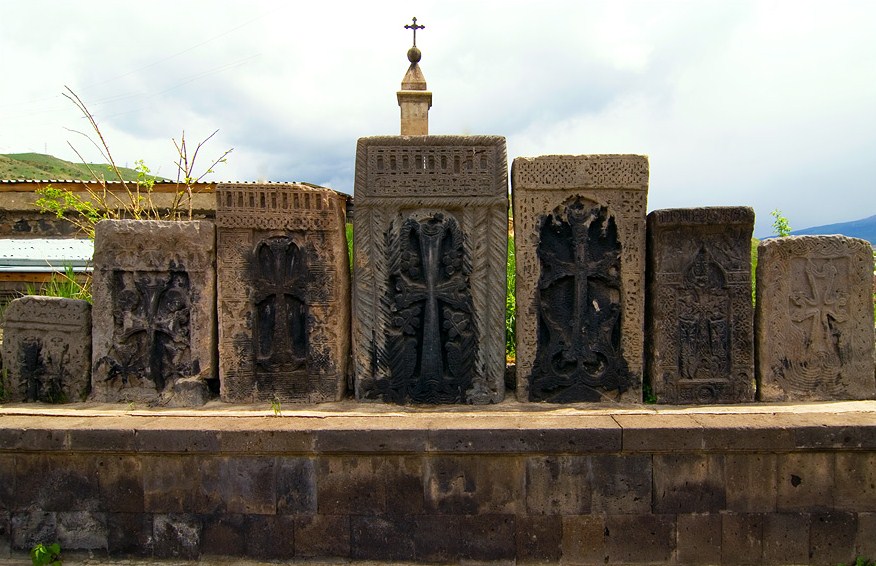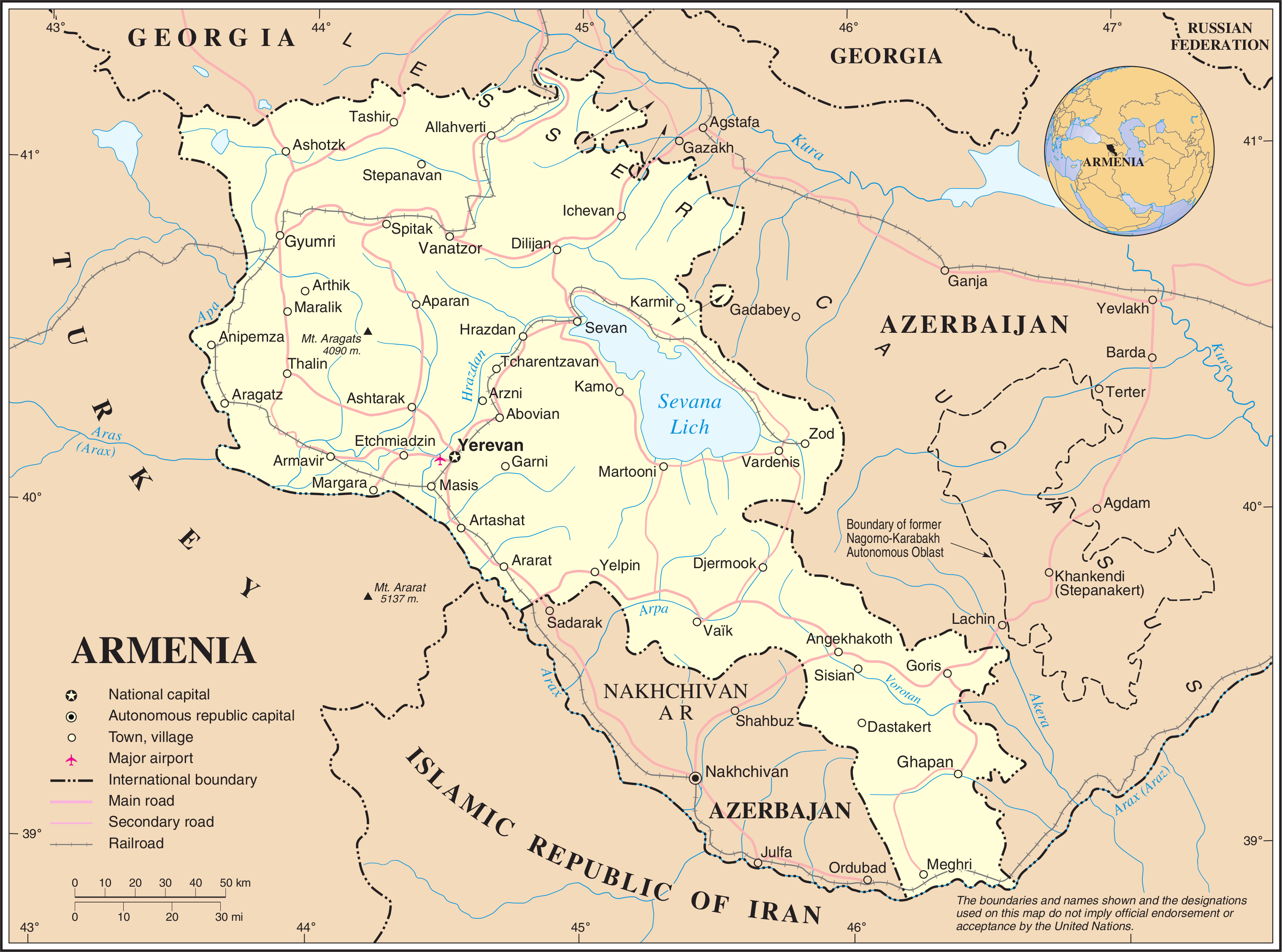|
Tashir
Tashir ( hy, Տաշիր) is a town and urban municipal community located in Lori Province at the north of Armenia, near the border with Georgia. It is located 42 km north of the provincial centre Vanadzor and 154 north of the capital Yerevan. As per the 2016 official estimate, the population of Tashir is around 7,500. Etymology Tashir was founded in 1844 as Vorontsovka, named after the Russian prince and field-marshal Mikhail Semyonovich Vorontsov who was leader in the Caucasian War from 1844 to 1853. In 1935, the town was renamed Kalinino by the Soviets, in honor of the Bolshevik revolutionary Mikhail Kalinin. With the independence of Armenia in 1991, the town was renamed Tashir after the historic Armenian region of Tashir, a canton within the Gugark province; the 13th province of the historic Greater Armenia. The name of ''Tashir'' – known as ''Tashiri'' in neighboring Georgia – is known since classical antiquity, referring to the plateau between the Debed and Pambak ... [...More Info...] [...Related Items...] OR: [Wikipedia] [Google] [Baidu] |
Lori Province
Lori ( hy, Լոռի, ), is a province (''marz'') of Armenia. It is located in the north of the country, bordering Georgia. Vanadzor is the capital and largest city of the province. Other important towns include Stepanavan, Alaverdi, and Spitak. It is home to the UNESCO World Heritage Sites of Haghpat and Sanahin monasteries and the well-preserved Akhtala monastery, where Armenians, Georgians, and Greeks make an annual pilgrimage on September 20–21. The province was heavily damaged during the 1988 Armenian earthquake. The province is served by the Stepanavan Airport. Etymology The name Lori (Լոռի) is of Armenian origin (from Armenian "quail"), first appeared in the 11th century when King David I Anhoghin founded the fortified city of Lori. The fortress-city became the capital of the Kingdom of Tashir-Dzoraget in 1065. The name Lori later spread through the region and replaced the original name of Tashir. Geography Situated at the north of modern-day Armenia, ... [...More Info...] [...Related Items...] OR: [Wikipedia] [Google] [Baidu] |
Kingdom Of Tashir-Dzoraget
The Kingdom of Tashir-Dzoraget ( hy, Տաշիր-Ձորագետի Թագավորություն ''Tashir-Dzorageti t'agavorut'yun''), alternatively known as the Kingdom of Lori or Kiurikian Kingdom by later historians, was a medieval Armenian kingdom formed in the year 979 by the Kiurikian dynasty, a branch of the Bagratuni dynasty, as a vassal kingdom of the Bagratid Kingdom of Armenia. The first capital of the kingdom was Matsnaberd, currently part of modern-day Azerbaijan. It was located on the territories of modern-day northern Armenia, northwestern Azerbaijan and southern Georgia. The founder of the kingdom and the Kiurikian dynasty was king Kiurike I (also known as Gurgen I). In 979 King Smbat II of Armenia granted the province of Tashir to his brother Kiurike with the title of king. The branch went on to outlive the main one in Ani. It became especially strong during the reign of King David I Anhoghin who succeeded his father Kiurike and ruled between 989 and 1048. D ... [...More Info...] [...Related Items...] OR: [Wikipedia] [Google] [Baidu] |
Tashir (historical Region)
Tashir or Taschir ( hy, Տաշիր) is an ancient Armenian historical region in the South Caucasus, which is divided between modern Armenia and Georgia since the 11th century , and still divided between the two countries, in the Armenian Lori Province and the Georgian region of Kvemo Kartli(Somhetia). The name of ''Tashir'' of Armenian origin, (known as ''Tashiri'' in neighboring Georgia) this word known since classical antiquity, referring to the plateau between the Debed and Pambak rivers. It was first mentioned by the Armenian historian Movses Khorenatsi in his 5th-century monumental work ''History of Armenia'', as one of the cantons of the lords of Gugark, a former province of Greater Armenia, which had become part of the Kingdom of Caucasian Iberia in the 5th century and again part of kingdom of Georgia in 1118. Tashir was a part of Greater Armenia since 6th century BC to 5th century AD. After this, both Armenian and Iberian lords already had pretension over the land of Tas ... [...More Info...] [...Related Items...] OR: [Wikipedia] [Google] [Baidu] |
Bagratid Dynasty Of Armenia
The Bagratuni or Bagratid dynasty ( hy, Բագրատունի, ) was an Armenian royal dynasty which ruled the medieval Kingdom of Armenia from c. 885 until 1045. Originating as vassals of the Kingdom of Armenia of antiquity, they rose to become the most prominent Armenian noble family during the period of Arab rule in Armenia, eventually establishing their own independent kingdom. Their domain included regions of Armenia such as Shirak, Bagrevand, Kogovit, Syunik, Lori, Vaspurakan, Vanand and Taron. Many historians, such as Cyril Toumanoff, Nicholas Adontz and Ronald Suny, consider them to be the progenitors of the Georgian royal Bagrationi dynasty. Early history The name "Bagratuni" derives from ''Bagarat'', a Parthian variant of the Old Iranian name ''Bagadata'' ("God-given"). Historian Cyril Toumanoff speculated that a general of King Tigranes II of Armenia () named Bagadates may have been the earliest known member of the Bagratuni family, which first emerged as '' ... [...More Info...] [...Related Items...] OR: [Wikipedia] [Google] [Baidu] |
Gugark
Gugark ( hy, Գուգարք, lat, Gogarene, Greek: ''Γογαρινή'') was the 13th province of the ancient kingdom of Armenia. It now comprises parts of northern Armenia, northeast Turkey, and southwest Georgia. Etymology Etymologically, Gugark in Armenian language denotes land of Gugars. word "Gugar" being a root and suffix -k meaning "land of". History At first, according to ancient Urartian inscriptions recorded in 785 BC, territory of Gugark was referred to as Zabaha, which is known today as Javakheti (Javakh in Armenian). In the beginning of IV century BC, (302BC) the territory was under Caucasian Iberia, but during Artaxias I's reign it was conquered. During the reign of the Artaxiad and Arshakuni kings of Armenia, Gugark was ruled by one of the kingdom's four '' bdeshkhs.'' The ''bdeshkh'' of Gugark was responsible for protecting the state's northern border. During the 4th century, the region was ruled by members of a branch of the House of Mihran. In 387, Arm ... [...More Info...] [...Related Items...] OR: [Wikipedia] [Google] [Baidu] |
Vanadzor
Vanadzor ( hy, Վանաձոր) is an urban municipal community and the third-largest city in Armenia, serving as the capital of Lori Province in the northern part of the country. It is located about north of the capital Yerevan. As of the 2011 census, the city had a population of 86,199, down from 148,876 reported at the 1979 official census. Currently, the town has a population of approximately 76,200. Vanadzor is the seat of the Diocese of Gougark of the Armenian Apostolic Church. Etymology Vanadzor was previously known as ''Gharakilisa'' (), meaning "black church" in Turkic. In the official records of the Russian Empire, the city was labelled as ''Karakilis Bolshoye'' (). Following the Sovietization of Armenia, the city was renamed ''Martunashen'' (, alternatively ''Martunakan'') in 1926 after Armenian Bolshevik revolutionary Alexander Miasnikian. On 3 January 1935, it was renamed ''Kirovakan'' (), after the popular Russian Bolshevik leader Sergey Kirov. A close associate of ... [...More Info...] [...Related Items...] OR: [Wikipedia] [Google] [Baidu] |
Armenia–Georgia Border
The Armenia–Georgia border ( hy, Հայաստան-Վրաստան սահման, translit=Hayastan–Vrastan sahman, ka, სომხეთ-საქართველოს საზღვარი, ') is the international boundary between Armenia and Georgia. It is in length and runs from the tripoint with Turkey in the west to the tripoint with Azerbaijan in the east. Description The border starts in the west at the tripoint with Turkey and proceeds overland to the tripoint with Azerbaijan via a series of irregular lines and a small section in the east along the Debed river. The western, more mountainous section of the boundary contains two lakes situated quite close to the frontier – Madatapa (in Georgia) and Arpi (in Armenia). History During the 19th the Caucasus region was contested between the declining Ottoman Empire, Persia and Russia, which was expanding southwards. Russia formally annexed the eastern Georgian Kingdom of Kartli and Kakheti in 1801, followed by th ... [...More Info...] [...Related Items...] OR: [Wikipedia] [Google] [Baidu] |
Bagratid Armenia
The Bagratid Kingdom of Armenia, also known as Bagratid Armenia ( xcl, Բագրատունեաց Հայաստան, or , , 'kingdom of the Bagratunis'), was an independent Armenian state established by Ashot I Bagratuni of the Bagratuni dynasty in the early 880s following nearly two centuries of foreign domination of Greater Armenia under Arab Umayyad and Abbasid rule. With each of the two contemporary powers in the region—the Abbasids and Byzantines—too preoccupied to concentrate their forces in subjugating the region, and with the dissipation of several of the Armenian '' nakharar'' noble families, Ashot succeeded in asserting himself as the leading figure of a movement to dislodge the Arabs from Armenia. Ashot's prestige rose as both Byzantine and Arab leaders—eager to maintain a buffer state near their frontiers—courted him. The Abbasid Caliphate recognized Ashot as "prince of princes" in 862 and, later on, as king (in 884 or 885). The establishment of the Bagrat ... [...More Info...] [...Related Items...] OR: [Wikipedia] [Google] [Baidu] |
List Of Sovereign States
The following is a list providing an overview of sovereign states around the world with information on their status and recognition of their sovereignty. The 206 listed states can be divided into three categories based on membership within the United Nations System: 193 member states of the United Nations, UN member states, 2 United Nations General Assembly observers#Present non-member observers, UN General Assembly non-member observer states, and 11 other states. The ''sovereignty dispute'' column indicates states having undisputed sovereignty (188 states, of which there are 187 UN member states and 1 UN General Assembly non-member observer state), states having disputed sovereignty (16 states, of which there are 6 UN member states, 1 UN General Assembly non-member observer state, and 9 de facto states), and states having a political status of the Cook Islands and Niue, special political status (2 states, both in associated state, free association with New Zealand). Compi ... [...More Info...] [...Related Items...] OR: [Wikipedia] [Google] [Baidu] |
Sasanian Empire
The Sasanian () or Sassanid Empire, officially known as the Empire of Iranians (, ) and also referred to by historians as the Neo-Persian Empire, was the History of Iran, last Iranian empire before the early Muslim conquests of the 7th-8th centuries AD. Named after the Sasanian dynasty, House of Sasan, it endured for over four centuries, from 224 to 651 AD, making it the longest-lived List of monarchs of Persia, Persian imperial dynasty. The Sasanian Empire succeeded the Parthian Empire, and re-established the Persians as a major power in late antiquity alongside its neighbouring arch-rival, the Roman Empire (after 395 the Byzantine Empire).Norman A. Stillman ''The Jews of Arab Lands'' pp 22 Jewish Publication Society, 1979 International Congress of Byzantine Studies ''Proceedings of the 21st International Congress of Byzantine Studies, London, 21–26 August 2006, Volumes 1–3'' pp 29. Ashgate Pub Co, 2006 The empire was founded by Ardashir I, an Iranian ruler who rose to po ... [...More Info...] [...Related Items...] OR: [Wikipedia] [Google] [Baidu] |





